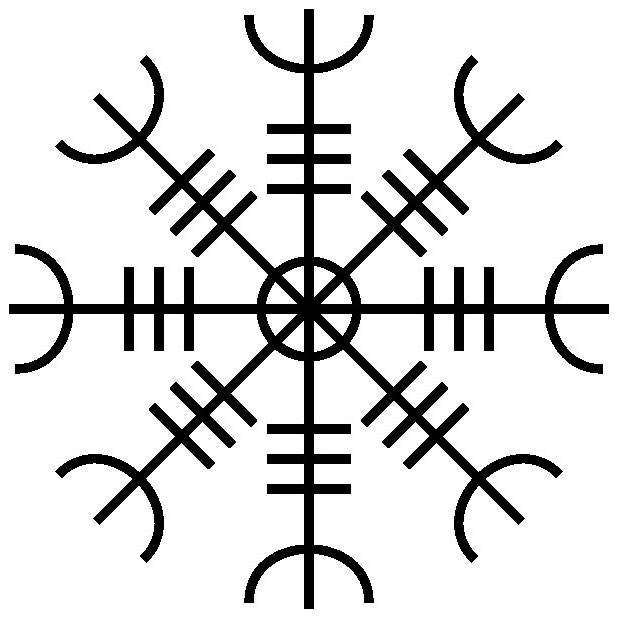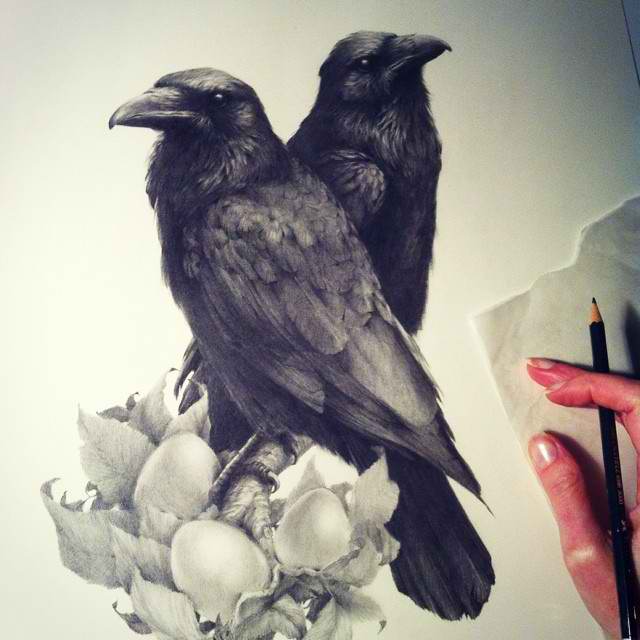Symbols and mythology used by the Vikings
The Vikings were based in Scandinavia from the 8th to the 11th century. Their territory expanded as they raided nearby countries. From 783 – 1066 B.C. is known as the Viking Age, when the Vikings were at their strongest. The Viking’s territory was across Europe and into Russia, the Mediterranean, and parts of North Africa. Before Latin was introduced to their culture, the Vikings used a runic alphabet for written communication. They practiced paganism, believing in more than one god, and used symbols throughout their lives.
Here are some of the common Viking symbols:
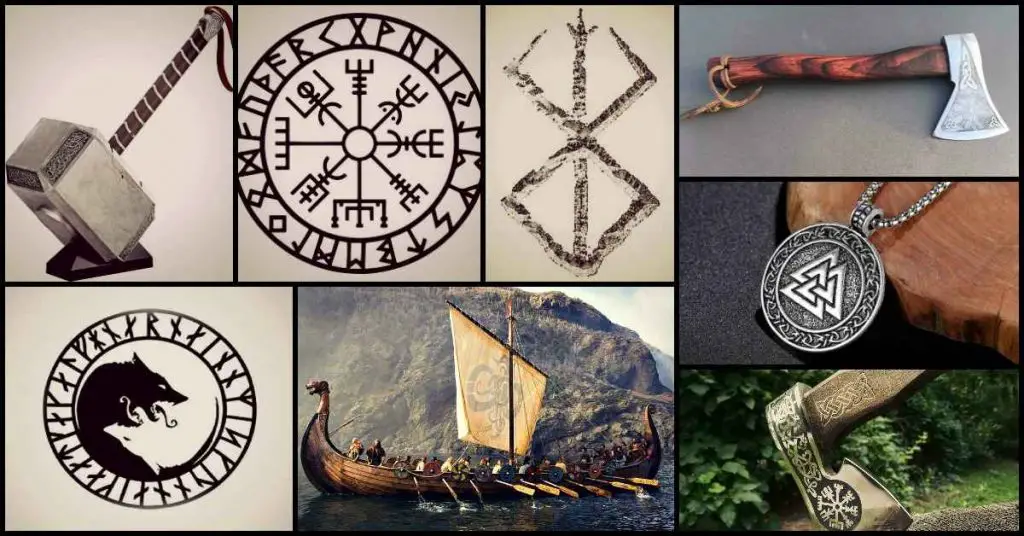
Viking Axe
Symbol of strength, bravery
The Viking Axe was used on battlefields by Viking warriors. The axe was shaped differently than the axes in use today. The Vikings preferred their axes to be easy to make and use. The more axes they had, the more weapons they had to fight with. The Viking axe had a single cutting edge. The bottom of the blade could be hooked and shaped to help grip the weapon in battle. The axe represents strength and bravery.
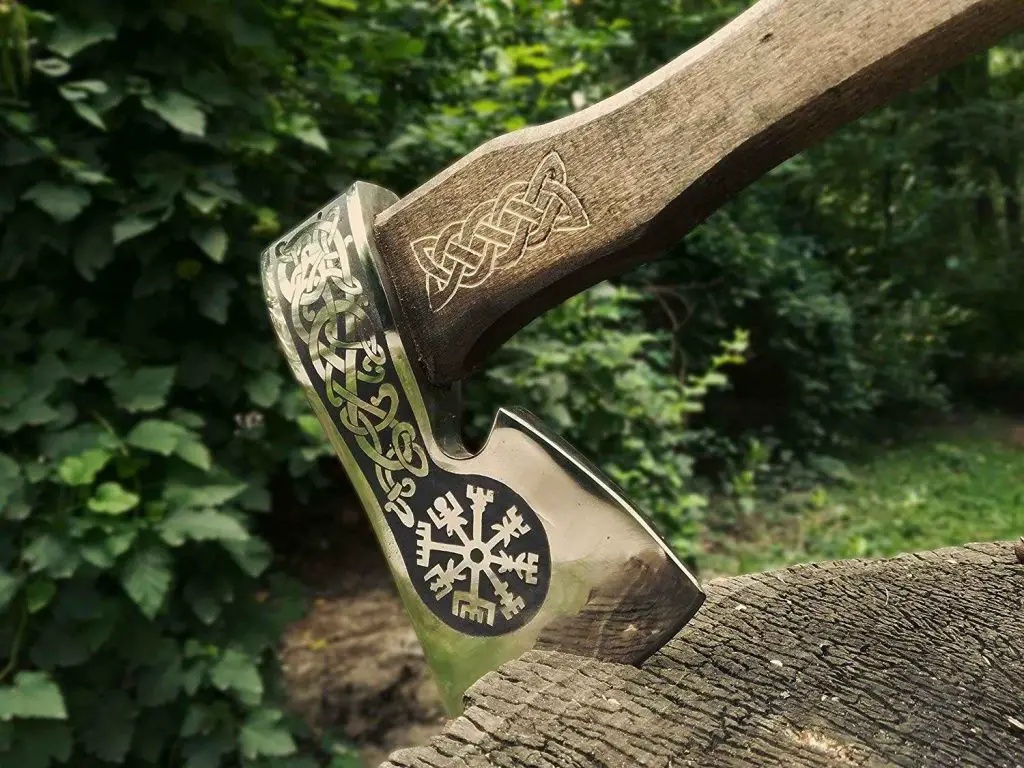
Mjolnir (Thor’s Hammer)
Symbol of power, protection, blessing
Thor was the god of war and thunder. Whenever Vikings heard thunder, they knew Thor had used his hammer. Thor’s hammer could kill gods and bring down mountains. It was crafted by dwarves who said it would never fail and always return to Thor whenever he threw it. Mjolnir could also bring things back to life. If Thor’s goats that he used to pull his chariot died, all Thor needed was to save their skin and bones, and he could use Mjolnir to bring them back to life. Mjolnir was used to bless births, marriages, and funerals. Vikings made amulets out of Mjolnir to wear as protection from storms.
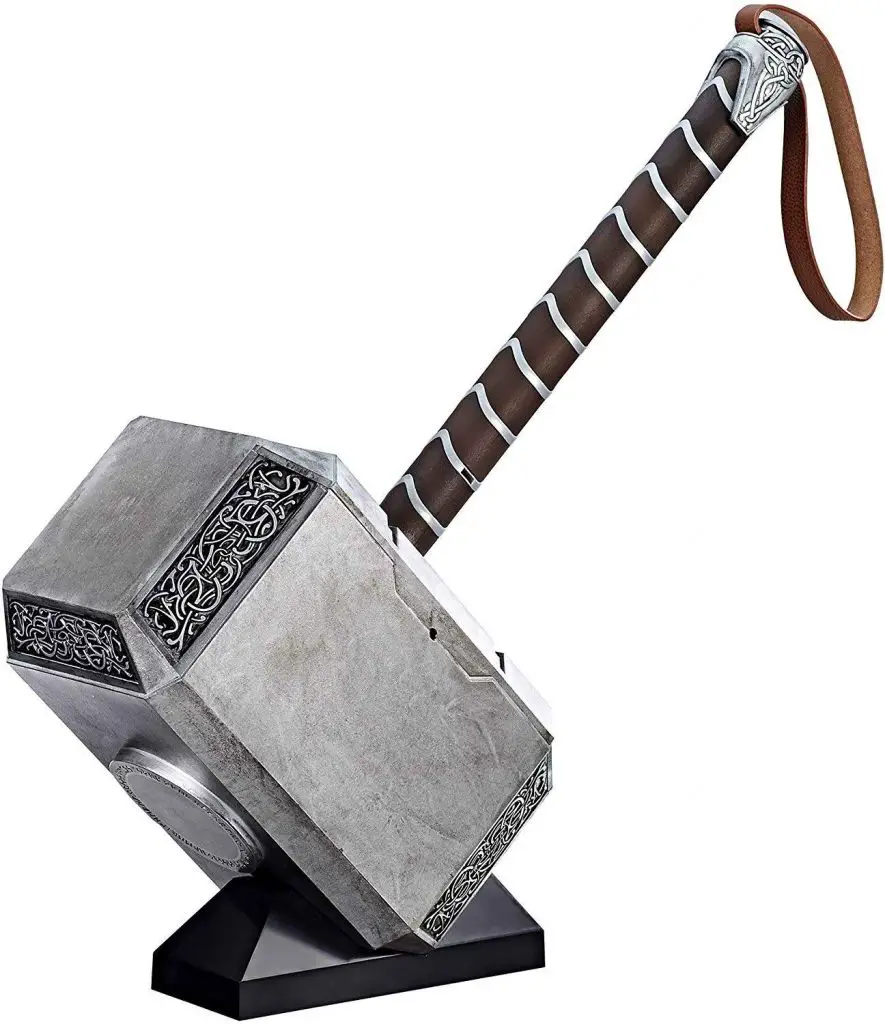
Berserker
Symbol of bloodlust, uncontrollable rage, protection
Viking Berserkers were warriors. They would fight while in a trance-like existence and kill all of their enemies around them without thought. They were ruthless and fearless. Berserkers usually wore a bearskin when they fought. Berserkers worshiped the bear. They drew their powers from bears. While fighting, Berserkers were safe from iron and fire, and they howled, gnashed their teeth, and foamed at the mouth. They symbolized the bloodlust of war while they used their teeth and hands to rip apart their enemies. Berserkers were bodyguards and used as a shock force by kings. Some say that berserkers literally transformed into bears while in the midst of their bloodlust. Today, the Danish guard wears bearskin hats as a symbol of the berserkers.
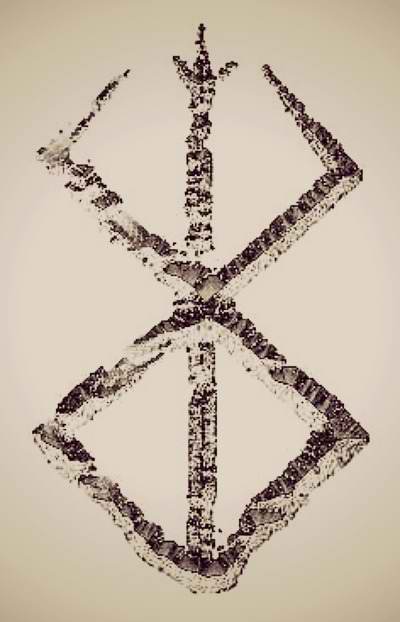
Wolves Symbol
Symbol of protection, loyalty, destruction, savagery
The wolf is both a positive and negative symbol in Viking lore. Along with the berserkers, there was another set of warriors who fought with bloodlust. They were called Ulfhednar. Ulfhednar were special warriors to Odin. Ulfhednar were similar to berserkers except they fought in packs around the battlefield and wore wolfskins while fighting. They were protectors of people and would eventually end up in Valhalla.
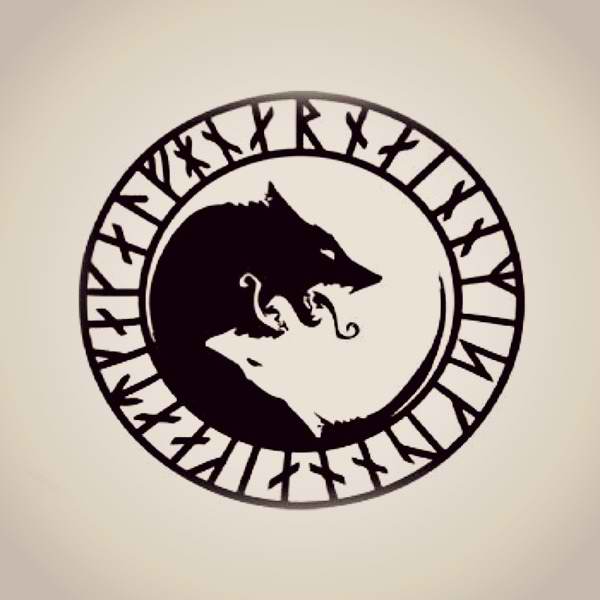
Fenrir is the son of Loki and a giantess. He was a large wolf who would not stop growing and who was uncontrollable, even by the gods. Dwarfs fashioned a chain to keep Fenrir under control. According to the myth, Fenrir is still chained and plots his revenge for being contained. At the dawn of Ragnarok, Fenrir will break free and eat the moon and the sun. He will also kill Odin. Fenrir is a symbol of destructive forces. He is something that cannot be contained and will wreak havoc upon the earth.
Viking Ship
Symbol of power, determination, skill
The Vikings were one of the first Norsemen to travel and conquer parts of Europe. They were able to do this with their longships. Longships were made to be rowed or used with a sail. They stood up to the ocean and were important in wars. They could sail in both small streams and oceans and could be used to outpace their enemies. The curled front of the ship made many Europeans call them dragon ships. These were not large ships but were more like boats. Still, the Vikings used them to conquer Europe and sail to North America. Vikings would often be buried in their longships so they could be used in the afterlife.
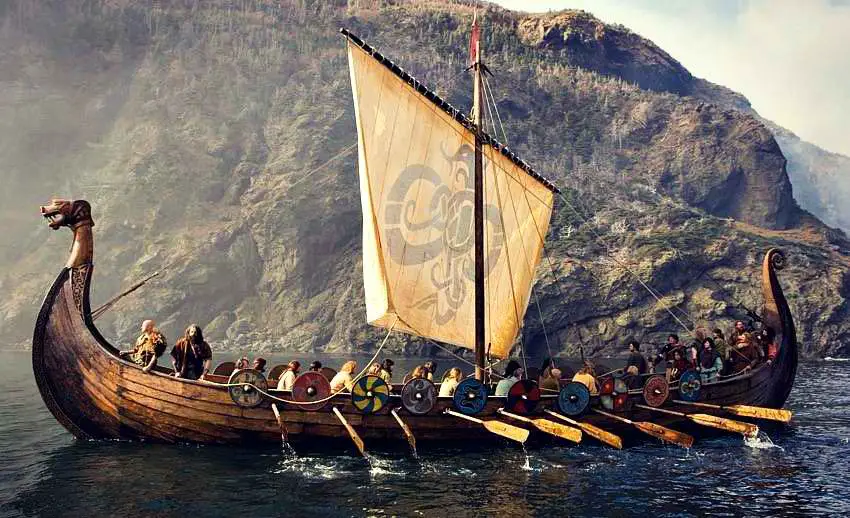
There were two famous longships in Viking mythology. First was Skithblathnir, which was the god Frey’s ship. Frey was the god of fertility and peace. His ship could be folded up and stored in a pocket. It could also hold all the gods. They sometimes used Frey’s ship to travel anywhere they wanted to go.
The second ship is Nalgfar. It is the ship of Hel, the goddess of the underworld. It is made up of fingernails of the dead and will rise up against the gods during Ragnarok. Loki and the giants will helm the ship and use it to attack Asgard, home of the gods.
The Boar
Symbol of happiness, plenty, peace
The boar was used in Viking symbolism to represent plenty, happiness, and peace. Boars were the attendant spirits of Freya and Frey. Freya was the goddess of love and her boar was called Hildisvini. Hildisvini meant battle swine. Freya would ride her boar into battle. Frey is the god of fertility and his boar is named Gullinborsti, or golden bristles. Gullingorsti was made by dwarves and has bristles that shine in the dark. Vikings would make boar sacrifices to Frey and Freya.
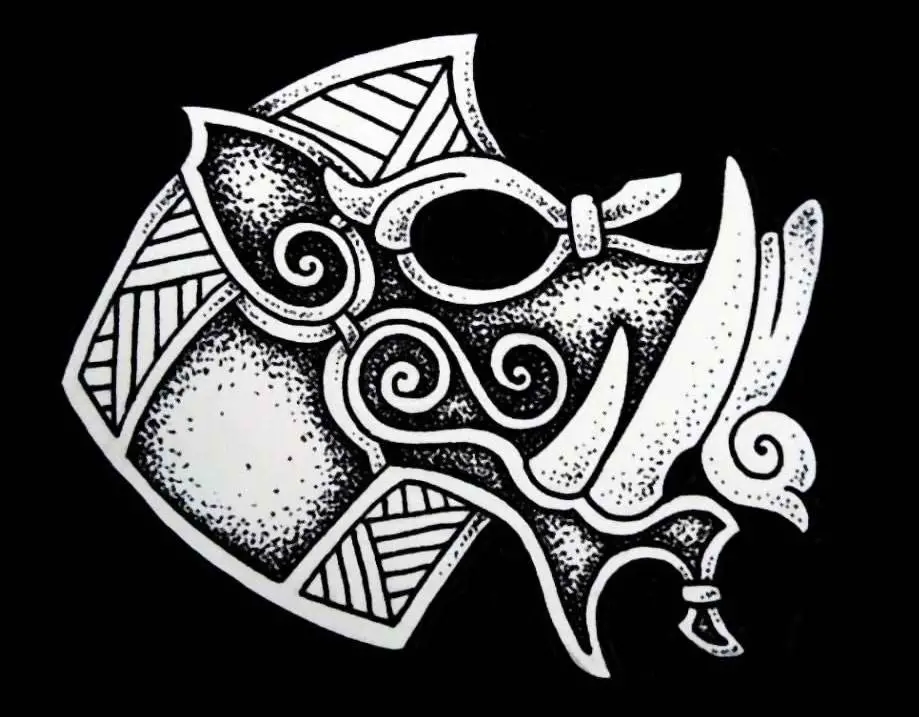
Valknut
Symbol of bravery, courage, afterlife, destiny
The Valknut is a symbol of slain Viking warriors. There were three places a Viking could go when they died. They could end up in HEL, which is what it sounds like. HEL is ruled by the goddess Hel and is a dark place that has a large feasting table. The warriors did not want to end up in Hel. People who die of disease or old age end up in HEL. Another destination was Helgafjell, which was a holy mountain where people lived lives similar to the ones they lived on earth.
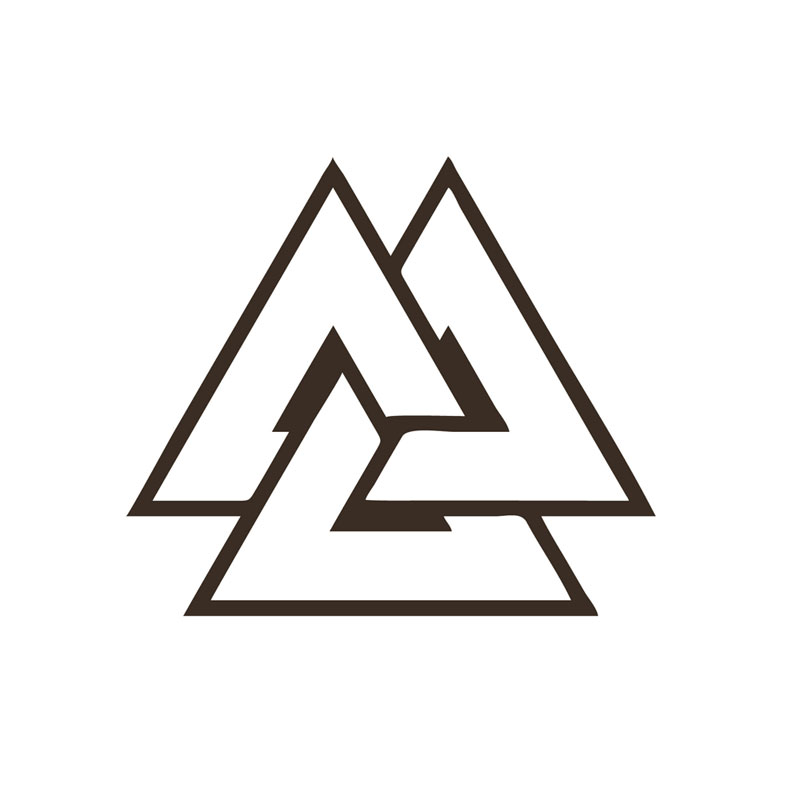
The third place a Viking could go when they died was reserved for the warriors. Only the warriors could end up in Valhalla. Valkyries would gather the dead warriors and fly them to Valhalla. In Valhalla, the warriors would meet the god Odin and feast and revel with him. When it came time for Ragnarok, the warriors would rise and fight by Odin’s side in the final battle to determine who would rule the world. It was a great honour to end up in Valhalla, and slain Viking warriors were held in the highest regard on Earth as well.
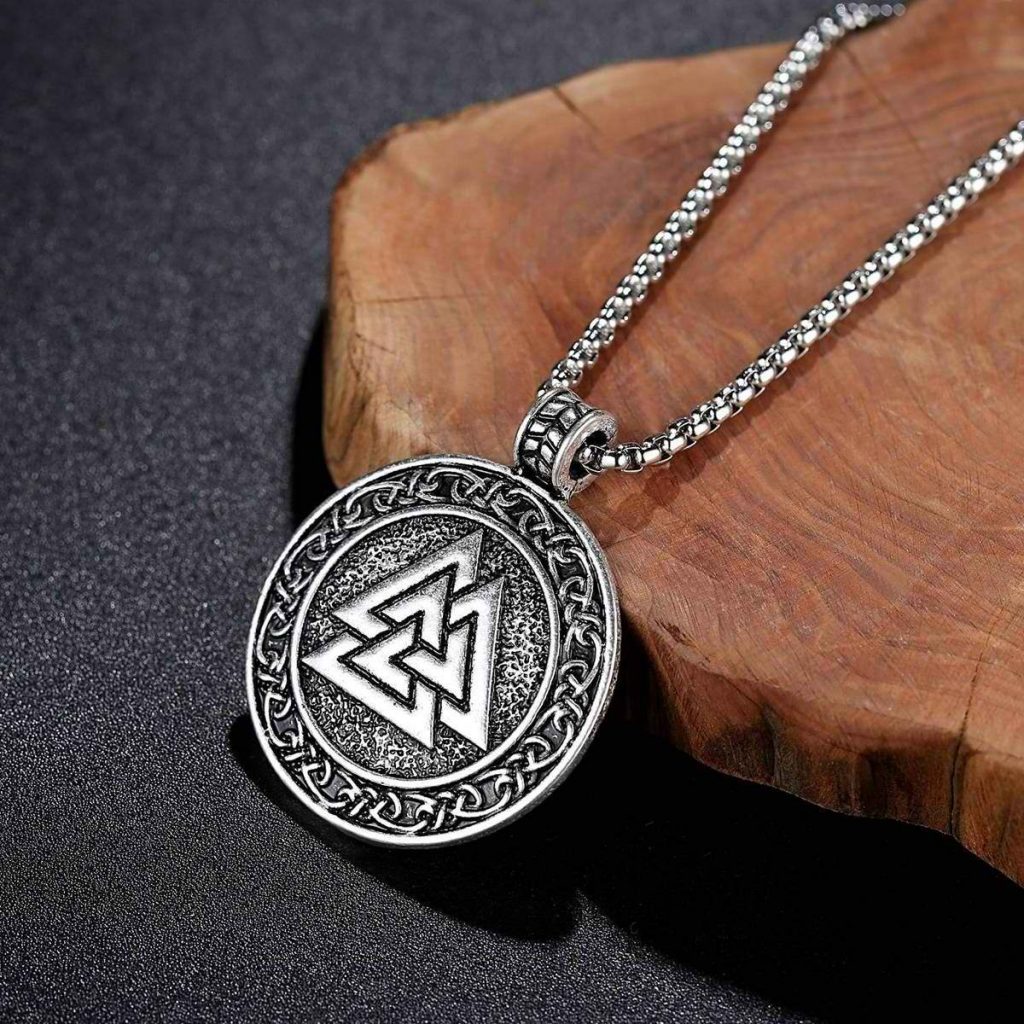
The three interlocking triangles represent the three afterworlds, and the nine points represent the Nine Worlds, which house the different beings from Viking legends.
Vegvisir (Viking compass)
Symbol of guidance, maintaining course, protection
The Vegvisir, or Viking compass, has eight different arms and was used as a protection spell from getting lost. It is composed of magical rune staves numbering eight in all. The Galdrabok, a book of spells, mentions the Viking compass as a symbol that was drawn in blood and was a symbol of protection. Each of the staves of the Viking compass represents a direction.
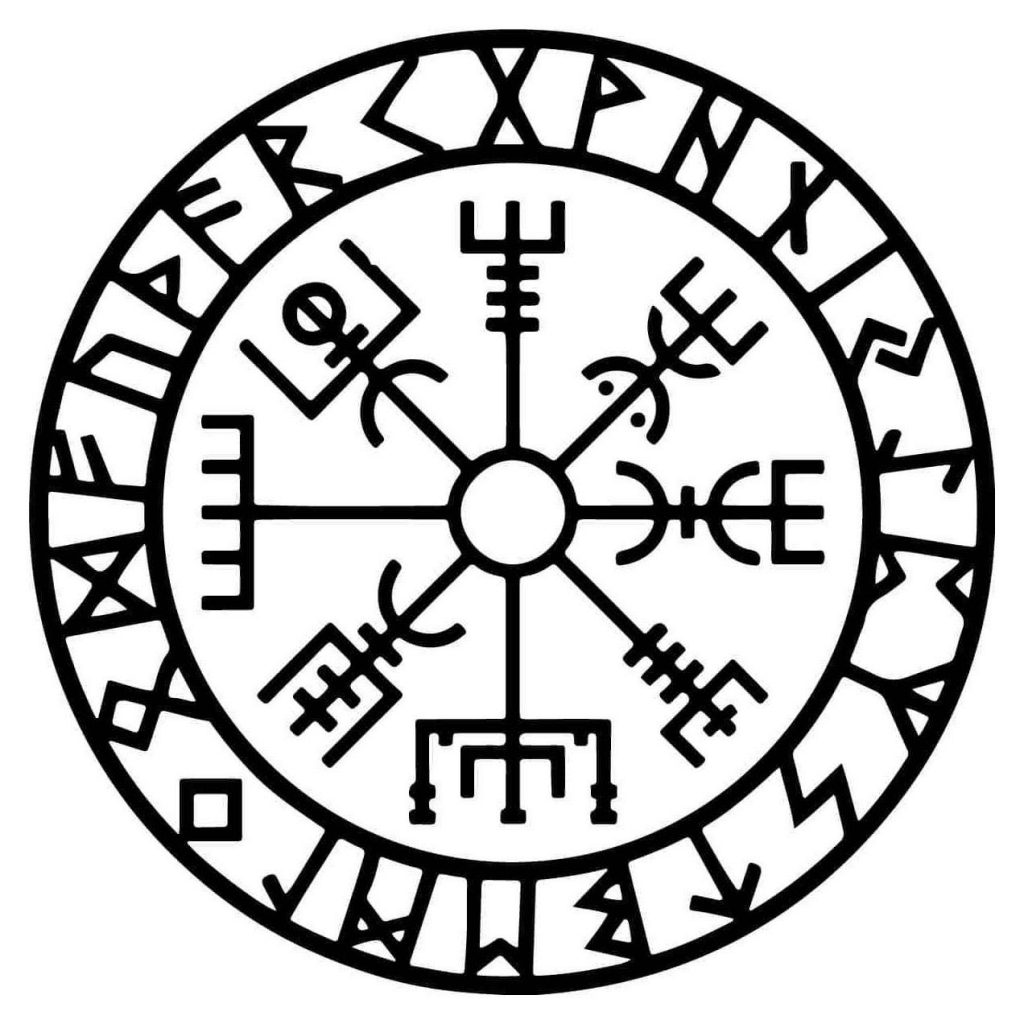
The Viking compass was painted on warriors and ships and worn in amulet form by warriors. The Vegvisir can be found today on different types of jewelry.
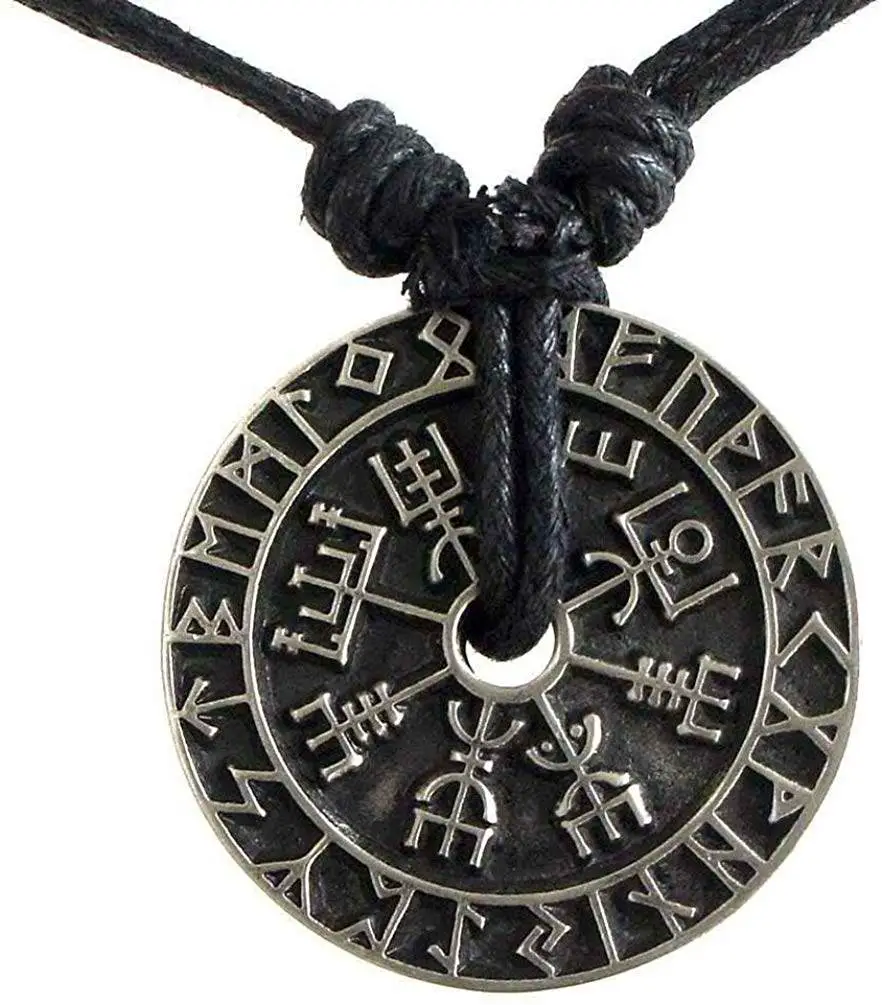
Odin’s Ravens
Symbol of wisdom, carnage
Odin had twin ravens named Hugin and Munin. Well before the Vikings, there were depictions of Odin with his ravens on brooches, amulets, and helmets. If someone saw a raven after making a sacrifice to Odin, it meant that their sacrifice was acceptable. Ravens were often seen near battlefields. They are carriers who feed on the flesh of the dead. Because dead warriors were taken to Valhalla, the association between Ravens and Odin was created.
Odin’s ravens were also thought to be sent into the world to gather information and wisdom for Odin. They would return at night and whisper what they had learned into Odin’s ears. They will also attend Odin in battle and inform him of his enemy’s plans.
Helm of Awe
Symbol of power, victory, protection, bravery
The Helm of Awe is similar in design to the Vegvisir, except that all of its staves are alike. The Vikings used it as a magical symbol of bravery and protection on the battlefield. It is considered a magical symbol that can bring victory for those wearing it. The runes it is constructed of are symbols of victory and ice. This represents the hardening of the soul in preparation for battle. It is said that the dragon Fafnir wore the Helm of Awe into battle and felt invincible.
The symbol was worn by warriors and was painted on their foreheads between their eyebrows like a third eye. The Helm of Awe’s power is centred in the pineal glands. It offered physical, spiritual, and mental protection to the warrior who wore it. It helps a warrior conquer their own fear and then pose a threat to their enemies.
